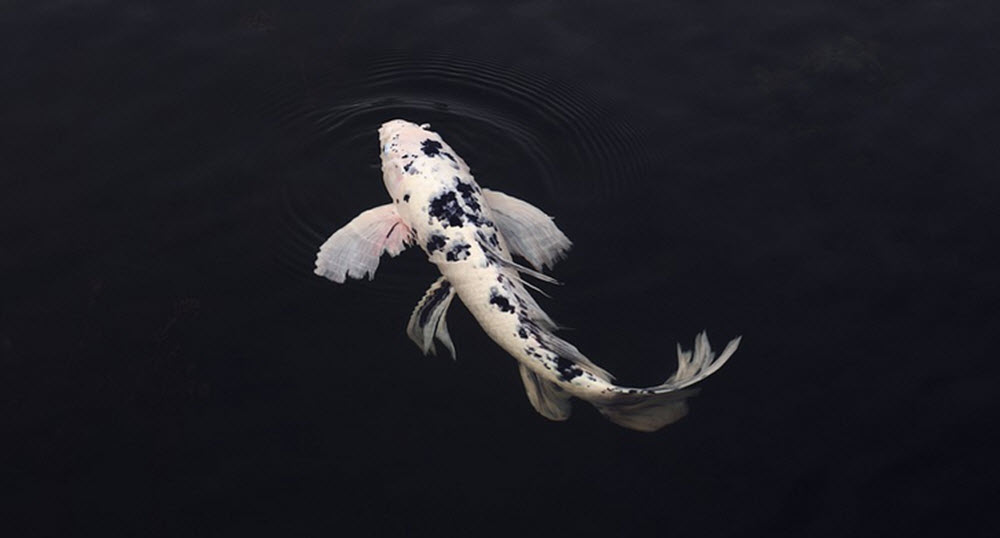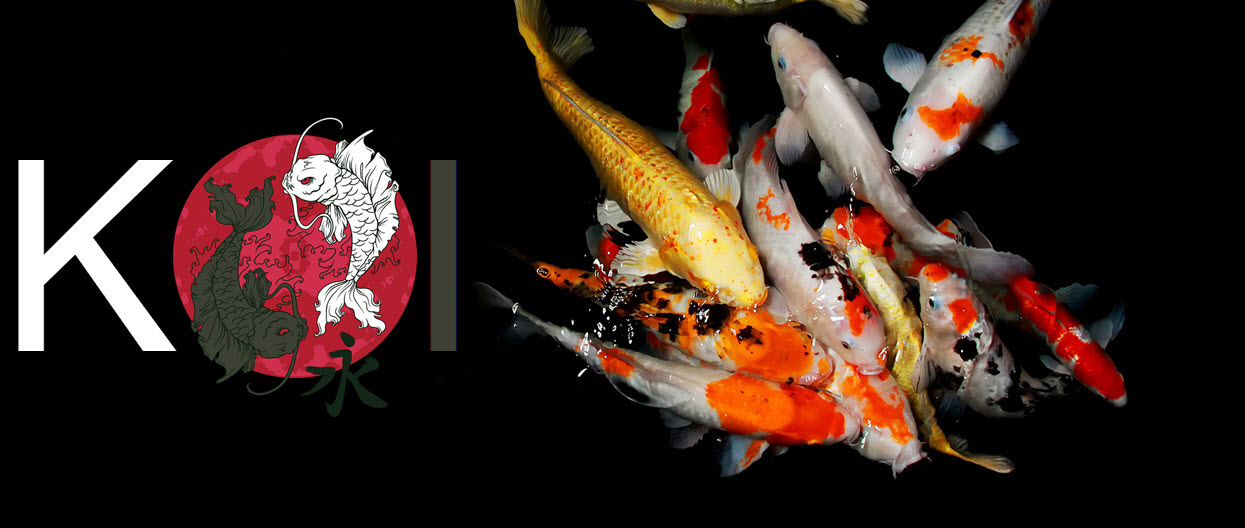Ghost koi was created in the 1980s by breeding wild carp of the species Cyprinus carpio with koi (nishikigoi). The result was a fish that in many ways is similar to a normal koi, but with dark scales down the back. Many ghost koi specimens also sport dark markings on the face and body, and some are almost fully black.
Today, both scaled and scale-free (doitsu) versions of ghost koi are available in the trade.
Buying ghost koi
Ghost koi tend to cost less than standard nishikigoi, and many purists do not consider them true nishikigoi since they are a cross breed with Cyprinus carpio. In some contexts, they are referred to as ghost carps rather than ghost koi.

Size
Ghost koi have roughly the same maximum size as standard koi, but tend to grow big faster since they eat more.
Lifespan
Since ghost koi was developed in the 1980s, we still don´t know their maximum lifespan. The oldest known koi (not ghost koi) lived to be over 200 years, and but living for 50-100 years is more common for koi. Of course, such long lifespans require a suitable environment, suitable food, and so on. Many koi die much younger than this due to illness, predation, injuries, etcetera.
Keeping ghost koi
Food
You can feed your Ghost koi a high-quality food intended for standard koi.
Compared to standard koi, the Ghost koi is known to be a more voracious eater. It is important not to overfeed it.
When standard koi and ghost koi are kept together, the ghost koi will usually appear first at feeding time and also eat faster and more. It is important to make sure your standard koi gets some food too.
Ghost koi fond of patrolling the water surface, looking for food there and waiting for feeding time. This makes them more visible than the standard koi, which is more prone to be digging around in the substrate below.
Health
Ghost koi is known to be pretty hardy, even compared to standard koi, which is probably something they have inherited from the wild carp Cyprinus carpio. Still, pathogens and pests that can infect and infest standard koi can injure and kill ghost koi as well.
We recommend that you inspect your ghost koi regularly and become aware of their normal look and behaviours. That way, you can spot health issues at an earlier stage when they are easier to deal with.
When you buy new fish for your pond, consider guaranteeing it to prevent the spread of infections and parasites.
Keeping your ghost koi in suboptimal conditions (e.g. when it comes to temperature and pH-value) will weaken their immune system and make them more like to develop health issues.
Reproduction
When the time is right and the water is warm enough, the ghost koi will seek out heavily planted areas of the pond. The females scatter their eggs and the males fertilize them in the water. It is common for Ghost koi to eat their own eggs (and the eggs of other fish in the pond), so professional breeders usually remove eggs to a separate container after spawning. The young offspring can then be released back into the pond when they are big enough to no be considered food.
